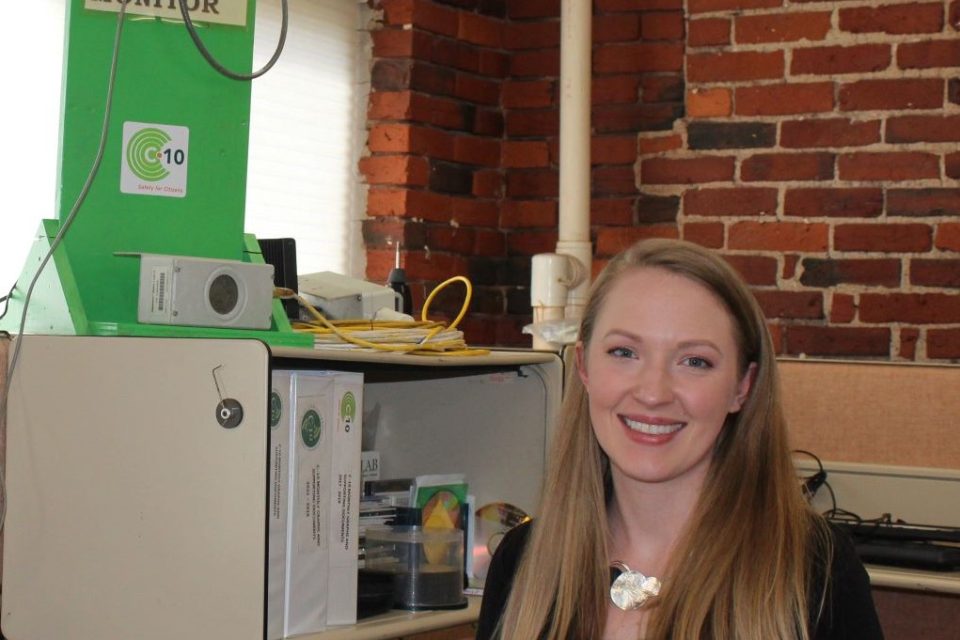REGIONAL – The C-10 Research and Education Foundation is hoping for a decision soon on its petition asking the Nuclear Regulatory Commission (NRC) to conduct a comprehensive investigation into how widespread the cracks in the concrete structures at the Seabrook Station nuclear power plant are.
This petition asked regulators to issue an enforcement action to the Seabrook Station because of “its repeated failures to adhere to its license requirements, especially the plant’s failures pertaining to the Alkali Silica Reaction (ASR) driven damage causing cracking and weakening of the plant’s concrete structures,” C-10 executive director Sarah Abramson wrote in an email.
The Seabrook Station, which generates electricity for 1.4 million New England customers, had its license renewed for 20 years, allowing it to operate until 2050. As part of its renewal, plant owner NextEra Energy was required to inspect the expansion of the ASR every 10 years, but a legal challenge brought by C-10 in 2019 resulted in that timeframe bring reduced to every six months .
The non-profit C-10 operates from its headquarters at CI Works in Amesbury a real-time radiological monitoring network in Massachusetts and New Hampshire, tracking and speaking out on safety and security concerns at the plant.
The NRC’s Performance Review Board initially denied C-10’s arguments after reviewing and debating them for three separate days last fall. It said there was no new information to consider.
At a public hearing on Dec. 14, C-10 asked the board to reconsider that decision.
The cracks in the concrete, caused by ASR, were discovered at the plant for the first time in U.S. nuclear plants in 2009. A 2012 survey found ASR in 131 structures.
Last year, Dr. Victor Saouma, an ASR expert and professor of civil engineering at the University of Colorado, Boulder, identified a description of ASR degradation from the third quarter NRC inspection report in the moist environment of the plant’s critical cooling tower. The tower is responsible for preventing the reactor’s overheating and meltdown.
The degradation was near the maximum level allowed, Saouma noted.
Abramson said it is surprising that ASR in a well-monitored area like the cooling tower had not been reported before. “This new ASR spot in the cooling tower must have been showing signs for quite a long time if it is already near the threshold.”
In ASR, which has no cure, aggregates containing forms of silica will react with alkali hydroxide in concrete to form a gel that swells as it absorbs water from the cement or the environment, such as in a cooling tower. These gels can expand and damage the concrete.
“Only with an investigation will we know how extensive the ASR is,” Abramson said.
The principal concern is that the ASR will weaken the plant walls and in the event of an earthquake cause structures to fall in on themselves. This might allow leaks of radiation from the plant, Abramson said.
The Nuclear Regulatory Commission Resident Inspector Chris Newport is responsive to C-10’s requests for information, where possible, but has indicated that much of the information on the ASR and recent violations is not information that the NRC or NextEra Energy would share with C-10, she said.
“Transparency is a real issue,” Abramson said.
Most of the quantitative and qualitative data about the concrete degradation that C-10 experts were able to use in this petition was derived from the NRC quarterly inspection reports.
From those reports, C-10 found that the company failed to install seven of 54 extensometer devices on key structures where ASR exists. NextEra has never been required to explain publicly how it forgot to install the equipment.
“We do not know how that happened,” Abramson said.
The issue was placed on the company’s corrective action list, but it has not disclosed if the extensometers have been installed.
“Newly discovered areas of ASR are found on a regular basis, but often only by the NRC inspectors who find them during their periodic inspection periods,” Abramson wrote.
A relatively inexpensive step to reassure the public would be for the NRC to require NextEra to hire an ASR expert to monitor the plant on a daily basis, Abramson said.
“If we all agree that ASR is dangerous and these things are needed when we find ASR, then we should all make the logical, easy jump to we want to know every single place that has ASR,” she said. “If the licensee isn’t even able to install the required equipment, how much faith can we have that they actually are looking for ASR in everyday operations?”
Seabrook Station Watchdog Asks Again for Concrete Cracks Probe
Tuesday January 03, 2023




